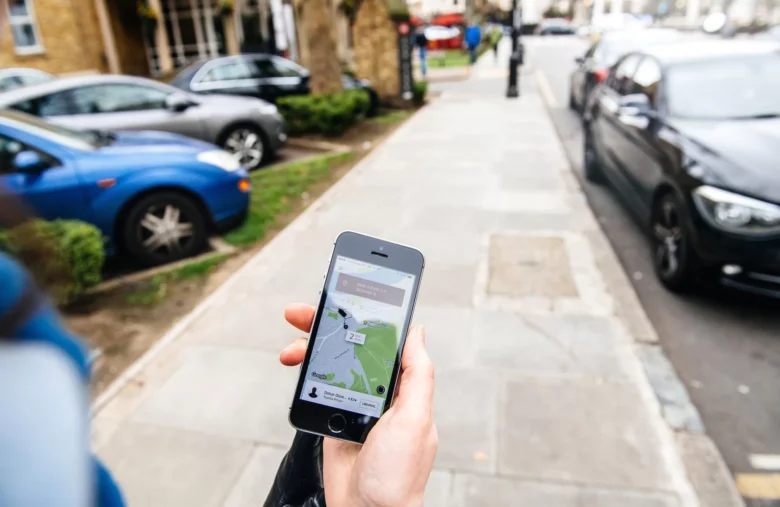Ridesharing apps have changed the way people move around cities and how they get around. Riders and drivers can connect to these apps on their phones and they have become an essential part of modern transportation. Ridesharing services are changing the way people travel, making travel easier, cheaper, and more flexible. They also help urban commuters solve many of the problems they face. As ridesharing services continue to evolve, they will have a greater impact on the way people move around cities.
1. The Rise of Ride-Sharing
People came to carpooling because they needed a better way to get around the city. Before these apps, the main way to get around a city was by taxi, public transit, or car. Ridesharing apps use technology to change the way transportation works, making it easier and better. With just a few taps on their phone, people can hail a ride, track the driver, and pay for the service, all within a digital ecosystem.
2. Convenient Transportation
One of the best things about ride-sharing apps is how easy they are to use. Users can request a ride virtually anywhere, at any time, without having to hail a cab or figure out how to navigate the complex public transportation system. Ride-sharing services are popular for daily commutes, special events, and even last-minute situations because they’re easy to use and easy to find.
Additionally, ride-sharing apps make traveling easier for people with disabilities or who have difficulty using other forms of transportation. Ride-sharing is accessible to everyone and works for everyone with features like accessible vehicles and driver assistance, making it easier for more people to get around.
3. How Effective Is It for Saving Money?
Ride-sharing apps are a low-cost alternative to traditional travel methods. For many people, ride-sharing is a cheaper option than owning and maintaining their car or constantly taking a taxi. Competitive pricing, deals, and ride-sharing are often part of the pricing model, and they all help drive prices down even further.
Users can compare prices and ride options to find a service that meets their needs and budget. Low costs are one reason why ride-sharing is becoming increasingly popular and changing the way people get around cities.
4. Reduce Traffic Congestion
Ride-sharing apps can help reduce traffic congestion in cities. These services find the best routes and allow people to share rides by carpooling, reducing the number of cars on the road. Carpooling allows people traveling in the same direction to travel together, reducing the number of rides needed.
Ride-sharing apps also use complex algorithms to figure out how to avoid traffic and find the fastest route. The technology reduces travel times and helps people avoid congested areas, smoothing traffic and reducing pressure on city infrastructure.
5. Environmental Impact
Many people have strong opinions about the impact of ride-sharing apps on the environment. Ride-sharing can help reduce greenhouse gas emissions and fuel consumption by reducing the number of cars on the road and encouraging people to carpool. Ride-sharing options and electric vehicles are also good for the environment, as they reduce your carbon footprint.
However, the overall environmental impact depends on many factors, such as how rides are used, the type of vehicle used, and how users behave. While ride-sharing can help the environment, more needs to be done to ensure that these services contribute to achieving environmental goals.
6. Take Public Transportation
A growing number of ride-sharing apps are connected to public transportation systems, making urban transportation networks more complete. This integration allows users to use both ridesharing and public transportation, making it easier to get from one place to another. For example, ride-sharing services can help people get to and from bus stops more easily by connecting them for the first and last mile.
Ridesharing apps help make transportation systems more flexible and efficient by working together with public transportation. This integration helps fill gaps in public transportation services and gives people in cities more ways to get around.
7. Challenges and Considerations
While ridesharing apps have many benefits, they also come with issues and challenges that reduce their usefulness. Key concerns include compliance, keeping drivers safe, and protecting personal information. Ensuring that ridesharing services are compliant and that the safety of drivers and passengers is paramount is important to maintaining trust and reliability.
Ridesharing is also changing traditional taxi services and public transportation systems, making us think about competition and collaboration. Finding ways to integrate ridesharing with current transportation systems and balance these different interests is an ongoing challenge in urban mobility.
Conclusion
All in all, ride-sharing apps are changing the way people move around cities by making transportation more convenient, affordable, and flexible. Their missions include reducing congestion, protecting the environment, and connecting to public transit systems. As technology advances and new ideas emerge, ride-sharing will continue to be an important part of the future of urban transportation.
FAQs
1. What apps can you use to share rides?
Ride-sharing apps are mobile websites that connect people who need rides with drivers who can provide them. These apps allow people to use their phones to hail a ride, see where the driver is, and pay. These apps help match people who need a ride with real-time available drivers, making them a convenient alternative to taxis and public transit.
2. How do ride-sharing apps work?
GPS technology is key to how ride-sharing apps work. They match users with nearby drivers. When a user requests a ride through the app, the system searches for available drivers nearby and sends the request to the nearest driver. Once a driver accepts a request, users can see where the driver is and when they expect to arrive. Users pay for rides through the app, and both drivers and passengers can rate each other’s experiences.
3. Why Use Ridesharing Apps?
Ridesharing apps help in many ways, such as convenience, saving money, and giving you options. Users can easily request a ride anytime, anywhere without having to find a taxi or know how to use public transportation. These apps usually offer cheaper ways to get around than traditional taxis and owning a car. Additionally, features like real-time tracking and ride-sharing make the overall journey more enjoyable.
4. How Do Ridesharing Apps Reduce Traffic Congestion?
Ridesharing apps help reduce traffic congestion by finding the best routes and encouraging people to share rides. People going in the same direction can share a car by carpooling, which reduces the number of cars on the road. These apps also use algorithms to find the fastest routes, which can help you avoid traffic jams and improve overall traffic conditions.
5. What impact does ride-sharing have on the environment?
Ride-sharing can be good for the environment because it reduces the number of cars on the road and the amount of gasoline used. Ride-sharing apps can help reduce greenhouse gas emissions by encouraging carpooling and giving people options such as electric vehicles. On the other hand, the overall environmental benefits depend on factors such as how car sharing works, the types of vehicles used, and how users behave.




